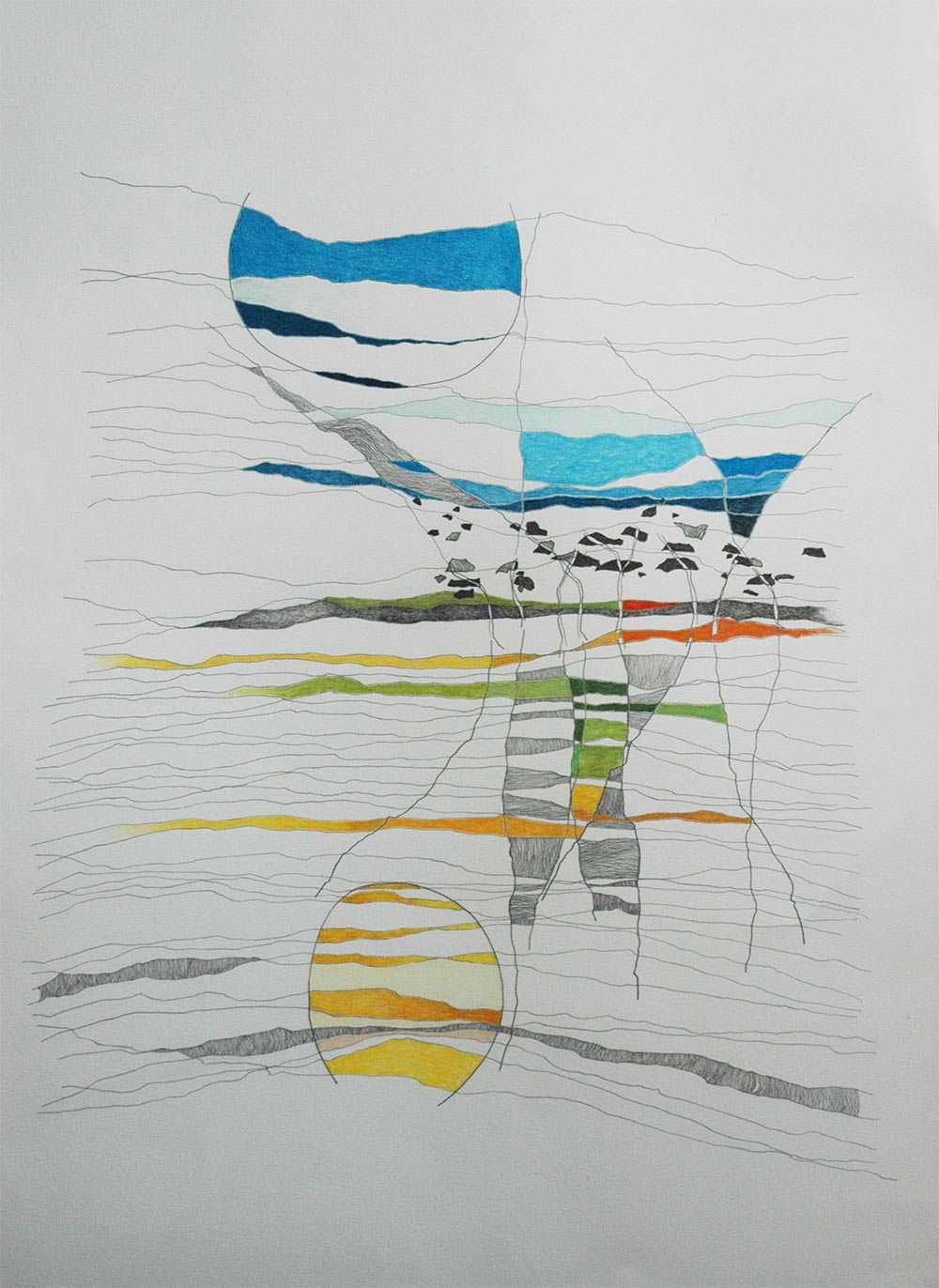I don’t think these very fine drawings are illustrations of ideas.
They are instead evidence of thinking through the drawing act. Not that they don’t grapple with big ideas outside of drawing itself- Des Smith has been talking through difficult thoughts for many years. In particular, how the wisdom embedded in a country can be shared by all those who inhabit it. And in this country specifically, how such wisdom (mostly ignored by white folk) could benefit us all equally.
Despite the bigness of those ideas Smith proceeds by scratching out lines on small paper. Searching rather than already knowing these lines have a wandering
quality – economical without being rigidly precise. I say scratching since the lines have an etched or chalky quality – even the blocks of colour are cross hatched – not bleeding or washing or dripping. (The exception being a single watercolour).
I say scratching also to emphasise the exploratory nature of making the drawing rather than it illustrating, or filling a space. The notion of thinking through the hand (as though spontaneously) is complicated by the fact that the drawings mostly are second versions of smaller works made in sketch books. They’re not reproductions or mere enlargements, and the ‘originals’ are not sketches/studies for a larger work, since none was intended. They are reflections and translations. Questions of how a line runs to another sheet which in turn joins with another are also reconsidered – questions a tiler or a land surveyor might also face.
Des Smith has been a professor of architecture, a pre-digital draftsman and a kind of specialist carpenter builder. Each is relevant – the drawings are asking you to consider big ideas about where we are, but also concrete thoughts about how a line makes it from the hand to a sheet, and how a sheet joins another.
Graham Crist. Architect.
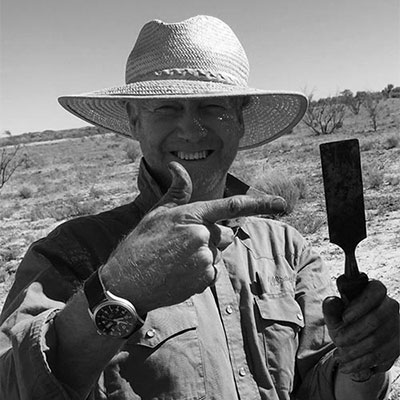

Rising Moon, Setting Landscape 70x50cm fountain pen & coloured pencil on paper
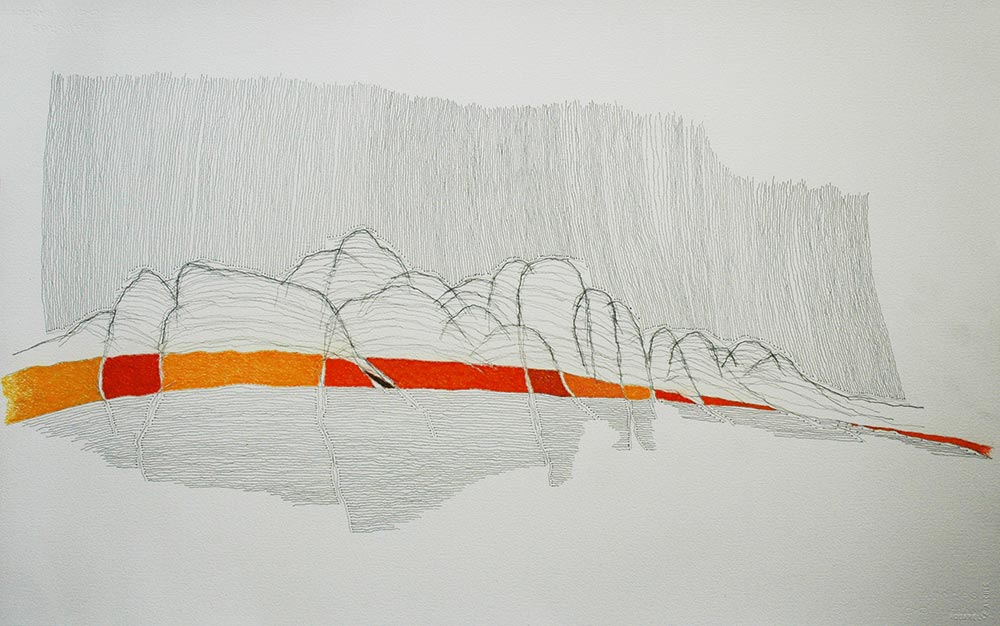
Kata Tjuta Lines 67x104cm pencil & chalk on paper
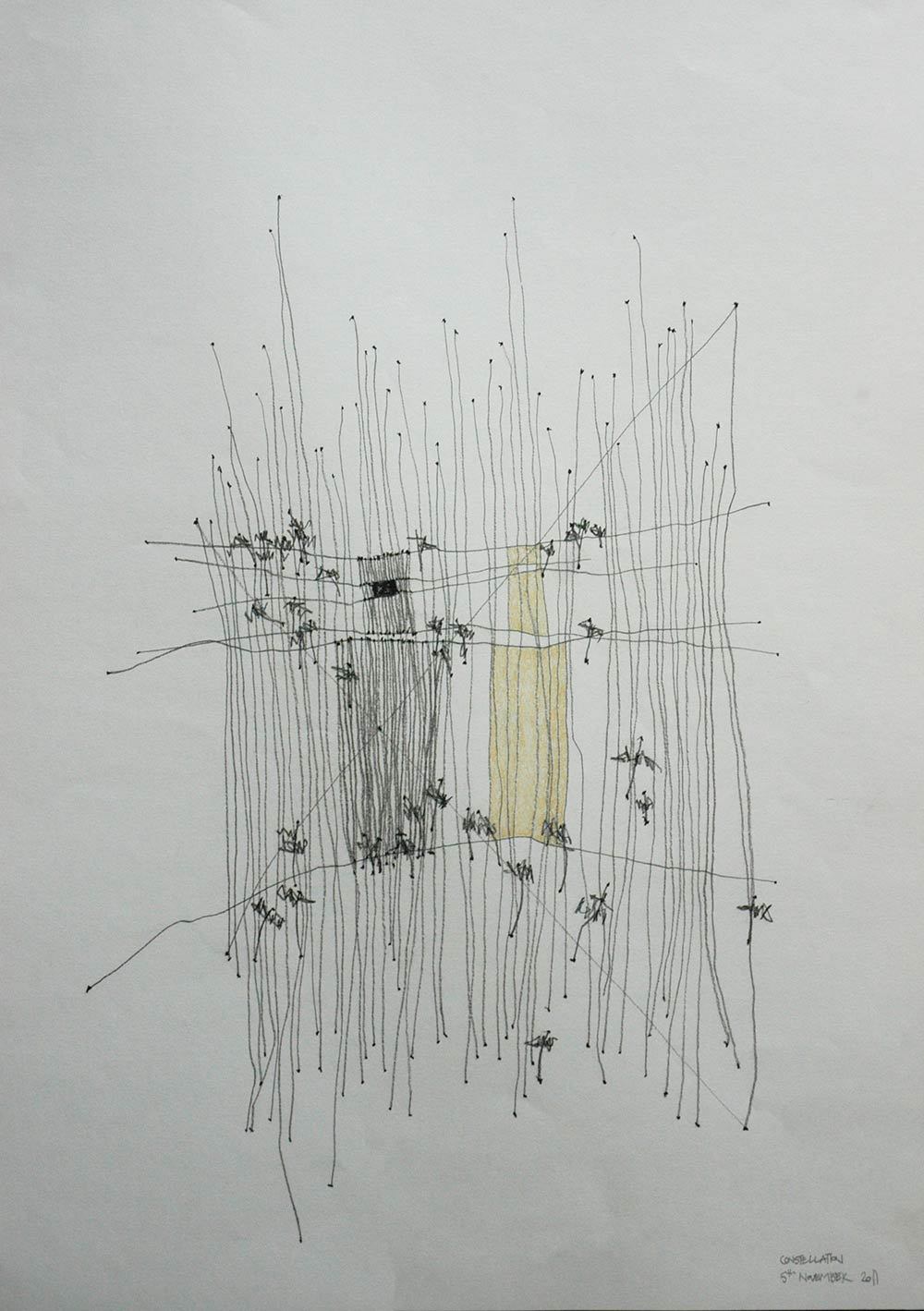
Constellation 60x42cm pen & chalk on paper

Uluru Lines 76x107cm pencil & chalk on paper
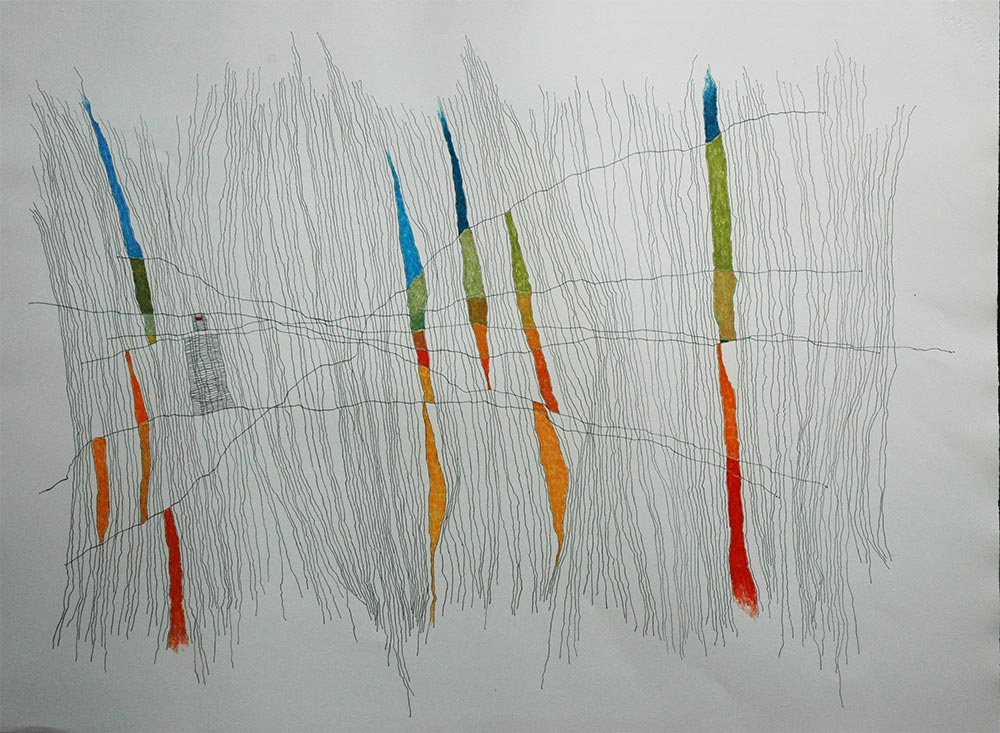
Kelly Veil 56x76cm pencil & chalk on paper

Moon, Australia, Kelly 49x120cm fountain pen on paper
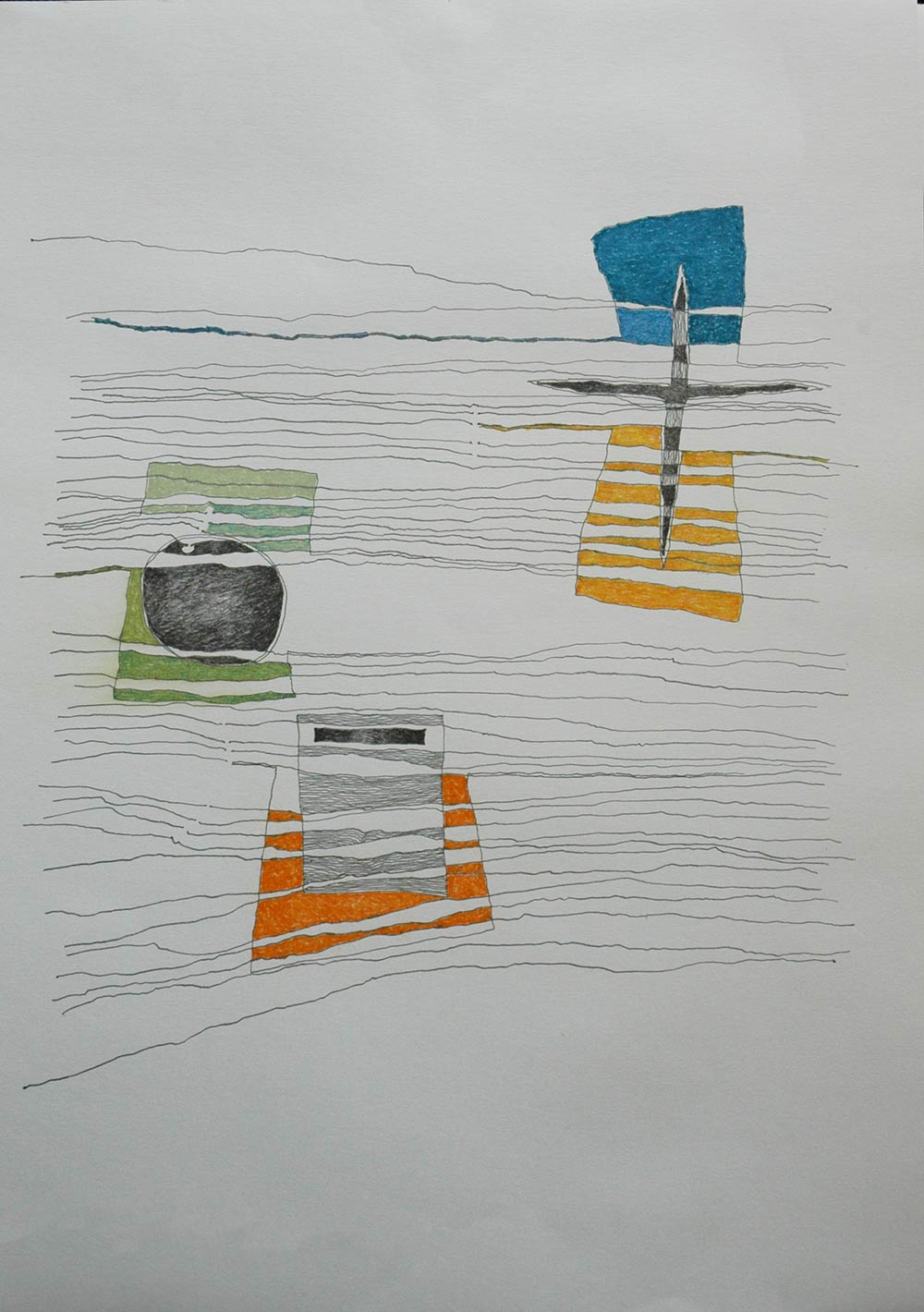
Four Symbols 60x42cm pencil & chalk on paper

House and Land Package 153x76cm pencil, chalk & fountain pen on paper

Kelly As Country 114x77cm. pencil & chalk on paper

